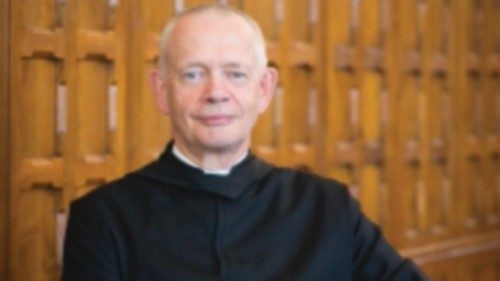
The last Sunday of the liturgical year: after today, we leave the company of Matthew to walk instead with Mark (and John). The relatively modern feast of Christ the King is celebrated on this Sunday, instituted in part as a bastion against the encroaching totalitarianisms of the first part of the twentieth century.
Today’s gospel is Matthew’s monumental parable of the last judgment, constructed of a litany of corporal works of mercy repeated four times. The image of the king weaves through Matthew; Jesus has already entered Jerusalem in royal triumph four chapters earlier and now, in his own words, the Son of man is explicitly identified with the King. The liturgy offers us two contrasting ways of understanding what a king is: in the reading from Ezekiel and in the responsorial psalm, he is a shepherd. The Davidic title reminds us that in the eyes of God, supreme leadership must be expressed as responsibility, protection, care, self-sacrifice, wise anticipation and respect for the needs of the individual. What a model for political leaders in our present world! It presents also, however, an inspiration and a challenge for all of us who exercise leadership of any kind, whether parents, teachers, managers, or in fact for anyone who has others “under them”.
The second way of understanding the figure of the king is via the image of the judge. Some readers may know the great apse mosaic of the basilica of St Paul in Rome: it shows Christ in glory as king of the universe, the Pantocrator, who holds a scroll with the words of today’s gospel. He is there to judge, to separate the sheep from the goats on the basis of the practical charity with which they have lived their lives. His face, however, is not fierce but tender. In effect, I suggest, judgment is not something he imposes on us: it is rather that he gives us the ability to see our true worth resulting in a just self-judgment.
In this dying liturgical year, we are confronted with the inevitability of the end, be it of the world or of our individual lives. Maybe we feel burdened with our unworthiness, our sinfulness and our mediocrity. Take heart! The sequence formerly used at the requiem Mass, the celebrated Dies Irae, was originally composed, it seems, as a hymn for the liturgy of the hours in this last week of the year. Its stern and solemn melody may have struck fear in the hearts of its hearers, but in fact its heavy sense of judgment (“Day of wrath and doom impending”) modulates into something far more hopeful, the belief that our prayer, addressed to “pie Jesu Domine”, king and shepherd and compassionate judge, will open the arms of the divine mercy.
By Fr Edmund Power













 Purchase the Encyclical here Fratelli Tutti
Purchase the Encyclical here Fratelli Tutti
